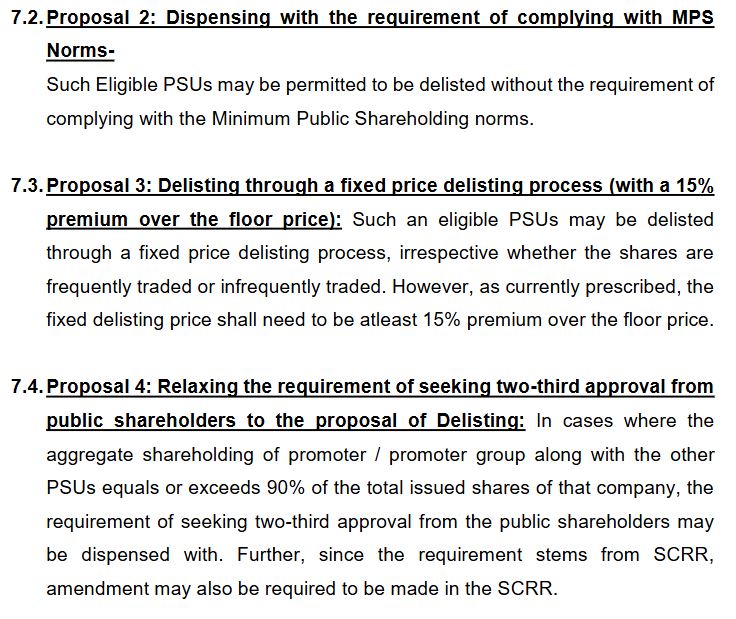A thread on the new Registered investment advisors (RIA) regulations which are coming to effect from 30th Sept, 2020
SEBI came up with the final regulations/explanations yesterday. Here is the link to the circular
sebi.gov.in/legal/circular…
SEBI came up with the final regulations/explanations yesterday. Here is the link to the circular
sebi.gov.in/legal/circular…
(Q1) Are there any new changes apart from the one notified in 1 July, 2020 and effective now?
Not much, but SEBI has given few clarifications where RIA has raised doubts. Good news is there are no further burden. The new guidelines are almost similar to the consultation paper.
Not much, but SEBI has given few clarifications where RIA has raised doubts. Good news is there are no further burden. The new guidelines are almost similar to the consultation paper.
(Q2) So, segregation for clients with respect to advisory and distribution remains?
Yes. Client has to choose one at the time of onboarding itself. Existing clients also need to choose one if they were doing both with same RIA.
Existing investments can continue to hold.
Yes. Client has to choose one at the time of onboarding itself. Existing clients also need to choose one if they were doing both with same RIA.
Existing investments can continue to hold.
(Q3) Can i get advisory in my name and distribution in the name of my wife, papa, mummy(!) from same RIA?
No. Client level segregation is done at PAN level and the family and dependents will be counted as one client.
Family - Self, dependent parents, dependent child, Spouse
No. Client level segregation is done at PAN level and the family and dependents will be counted as one client.
Family - Self, dependent parents, dependent child, Spouse
(Q4) How will SEBI know that two clients are related to each in family?
Client has to given annual declaration to RIA which need to give same to SEBI.
The definition of dependents is IT Act definition. Where the income gets clubbed they are dependent. Otherwise independent.
Client has to given annual declaration to RIA which need to give same to SEBI.
The definition of dependents is IT Act definition. Where the income gets clubbed they are dependent. Otherwise independent.
(Q5) How will the fees be decided now to RIA?
ONLY two modes:
(a) 2.5% of the AUA per client per annum or
(b) Max 1.25L per client per annum
Indirectly, it means RIA cannot charge performance fees.
Different clients can be charged with any of option (a) or (b)
ONLY two modes:
(a) 2.5% of the AUA per client per annum or
(b) Max 1.25L per client per annum
Indirectly, it means RIA cannot charge performance fees.
Different clients can be charged with any of option (a) or (b)
(Q6) Any changes to the client agreement?
For new clients, agreement need to be done BEFORE transfer of any fees or giving advice. SEBI has given sample T&C to avoid any confusion.
IMHO, this means agreement with digital signature will work but 'tickbox' for T&C will not work.
For new clients, agreement need to be done BEFORE transfer of any fees or giving advice. SEBI has given sample T&C to avoid any confusion.
IMHO, this means agreement with digital signature will work but 'tickbox' for T&C will not work.
(Q7) How frequent can RIA charges the fees?
Max 2 qtrs in one go as advance if going with option (a) or (b) as mentioned above
Not applicable to one time services like Portfolio review or making a financial plan.
No fee change before 12months.
Max 2 qtrs in one go as advance if going with option (a) or (b) as mentioned above
Not applicable to one time services like Portfolio review or making a financial plan.
No fee change before 12months.
(Q8) How will AUA be decided?
As per new norms, RIA need to have demat and unit statements of the client to show AUA.
AUA before 30 Sept, 2020 will not be counted under new norms.
As per new norms, RIA need to have demat and unit statements of the client to show AUA.
AUA before 30 Sept, 2020 will not be counted under new norms.
(Q9). Any changes to qualification criterion?
3yr for fulfilling new criterion for existing RIAs
All existing RIAs above age of 50 exempted from enhanced qualification
Anyone applying fresh need to fulfil all criterion at the time of applying
3yr for fulfilling new criterion for existing RIAs
All existing RIAs above age of 50 exempted from enhanced qualification
Anyone applying fresh need to fulfil all criterion at the time of applying
(Q10) What about the limit for 150 clients for individual RIAs?
The limit stays but family of client will be considered as one client only.
After 150, compulsory change to non-individual RIA.
During the application process to NI RA, one cannot onboard clients beyond 150
The limit stays but family of client will be considered as one client only.
After 150, compulsory change to non-individual RIA.
During the application process to NI RA, one cannot onboard clients beyond 150
(Q11) Apart from this, any other requirements.
The audit, record keeping, risk profiling, website details are now clearly laid out.
The audit, record keeping, risk profiling, website details are now clearly laid out.
(Q12) What will be the impact on the business?
(a) Compliant RIAs have better survival chance
(b) Robo-advisors and tip providers will get killed
(c) RIAs will merge to form NRIAs
(d) NRIAs will absorb RIAs
End of thread.
(a) Compliant RIAs have better survival chance
(b) Robo-advisors and tip providers will get killed
(c) RIAs will merge to form NRIAs
(d) NRIAs will absorb RIAs
End of thread.
• • •
Missing some Tweet in this thread? You can try to
force a refresh





